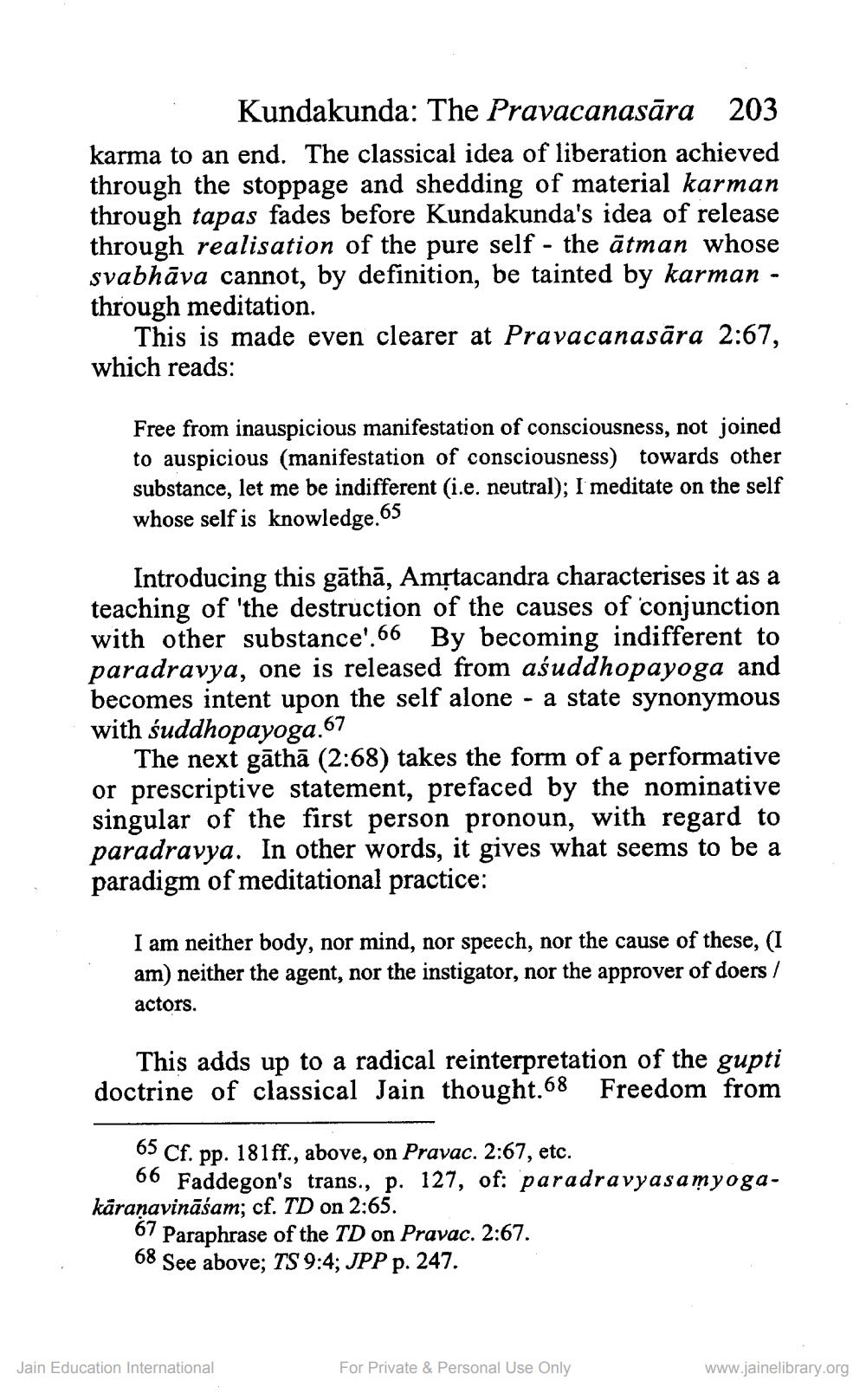________________
Kundakunda: The Pravacanasāra 203 karma to an end. The classical idea of liberation achieved through the stoppage and shedding of material karman through tapas fades before Kundakunda's idea of release through realisation of the pure self - the ātman whose svabhāva cannot, by definition, be tainted by karman - through meditation.
This is made even clearer at Pravacanasāra 2:67, which reads:
Free from inauspicious manifestation of consciousness, not joined to auspicious (manifestation of consciousness) towards other substance, let me be indifferent (i.e. neutral); I meditate on the self whose self is knowledge.65
Introducing this gāthā, Amrtacandra characterises it as a teaching of the destruction of the causes of conjunction with other substance'. 66 By becoming indifferent to paradravya, one is released from aśuddhopayoga and becomes intent upon the self alone - a state synonymous with śuddhopayoga.67
The next gāthā (2:68) takes the form of a performative or prescriptive statement, prefaced by the nominative singular of the first person pronoun, with regard to paradravya. In other words, it gives what seems to be a paradigm of meditational practice:
I am neither body, nor mind, nor speech, nor the cause of these, (I am) neither the agent, nor the instigator, nor the approver of doers / actors.
This adds up to a radical reinterpretation of the gupti doctrine of classical Jain thought.68 Freedom from
65 Cf. pp. 181ff., above, on Pravac. 2:67, etc.
66 Faddegon's trans., p. 127, of: paradravyasamyogakāraṇavināśam; cf. TD on 2:65.
67 Paraphrase of the TD on Pravac. 2:67. 68 See above; TS 9:4; JPP p. 247.
Jain Education International
For Private & Personal Use Only
www.jainelibrary.org




